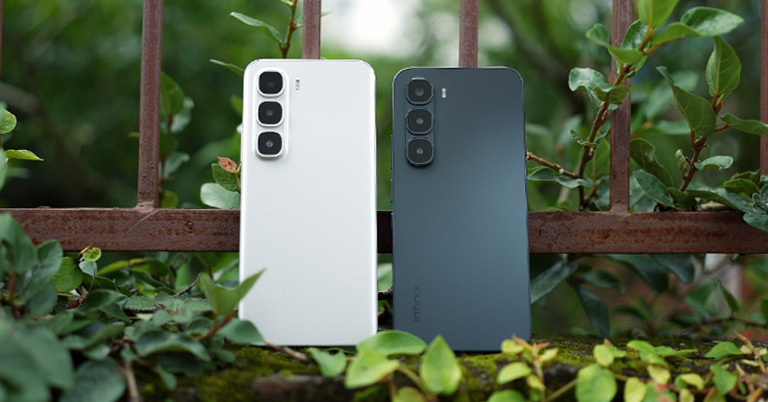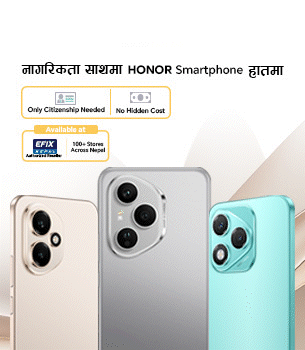No headings found
Why Trust Gadgetbyte?
At Gadgetbyte, we invest substantial hours into rigorously testing each product or service we review, guaranteeing that you make informed purchases. Learn more about our testing process.
Review Overview
Design
8.5/10
Display
8/10
Performance
8/10
Rear Camera
7/10
Front Camera
7/10
Battery
9/10
UI
8/10
Value for Money
9/10
Infinix has scored a couple of winners with the Hot 60 Pro and the Hot 60 Pro+. From a gorgeous slim-and-light build that just melts in your hands to a smooth AMOLED display, terrific battery life, and equally impressive performance, there is very little to complain about these phones.
So today, I have the Infinix Hot 60 Pro and Hot 60 Pro+ in for review. They both are budget phones, with the Hot 60 Pro priced at NPR 22,000 and the Hot 60 Pro+ at NPR 27,000.
Infinix has really surprised us with their product launches both last year and this year. Last year’s GT 20 Pro and Note 40 series were quite good, and this year too, the GT 30 Pro and Note 50 series are equally impressive, with good pricing and competitive specs. But what about these phones? Let’s talk about them.
Infinix Hot 60 Pro, Hot 60 Pro+ review: Specifications
| Feature | Hot 60 Pro | Hot 60 Pro+ |
|---|---|---|
| Display | 6.78-inch AMOLED, 144Hz, 1224 x 2720 pixels | 6.78-inch curved AMOLED, 144Hz, 1224 x 2720 pixels |
| Processor | MediaTek Helio G200 (6nm) | MediaTek Helio G200 (6nm) |
| RAM | 8GB | 8GB |
| Storage | 128GB/256GB + microSD | 128GB/256GB (no microSD) |
| Main Camera | 50MP | 50MP IMX882 + auxiliary lenses |
| Selfie Camera | 13MP | 13MP |
| Battery | 5160mAh with 45W charging | 5160mAh with 45W charging |
| Operating System | Android 15, XOS 15.1 | Android 15, XOS 15.1 |
| Build Material | Glass front, plastic back | Aluminum frame, nanofiber back |
| Water Resistance | IP64 rated | IP65 rated |
| Thickness | Not specified | 5.95mm |
| Weight | Not specified | 155g |
| Audio | Standard | JBL-tuned stereo speakers, Hi-Res audio |
| Connectivity | Wi-Fi 5, Bluetooth 5.4, NFC, USB-C | Wi-Fi 5, Bluetooth 5.4, NFC, USB-C |
| Available Colors | Coral Tides, Sapphire Blue, Jungle Breath, Orange Rose, Sleek Black, Titanium Silver | Coral Tides, Misty Violet, Sonic Yellow, Moco Cyber Green, Sleek Black, Titanium Silver |
Infinix Hot 60 Pro, Hot 60 Pro+ review
Design and Build
Now, many of you might be confused about the differences between the Hot 60 Pro and Hot 60 Pro+. The first difference is the design. The Hot 60 Pro+ comes with a curved design and slim body, while the Hot 60 Pro comes in a more squared, boxy design.
And since you’re paying a bit more for the Pro Plus, you can immediately tell from the design itself. It feels more premium in hand, thanks to its aluminum frame and nano-fiber back, whereas the Hot 60 Pro has a plastic frame and back. Also, the Pro Plus carries an IP65 rating compared to the IP64 rating on the Hot 60 Pro.
The Hot 60 Pro+ has even achieved a Guinness World Record for being the thinnest 3D curved display smartphone. You can also clearly see from this article how slim it is—just 5.95mm thick. Not only compared to the Hot 60 Pro, but even if you place it side by side with the S25 Ultra or iPhone 16 Pro Max, the difference is striking.
The Hot 60 Pro also comes with an extra button on the side, which you can customize to open any app you want. And finally, talking about the design, both phones come in some really cute color options—perfect for Gen Z. Even though I’m a millennial, I personally liked them as well.
Display
Display-wise, both phones are nearly identical. Both feature a 144Hz refresh rate AMOLED panel, with peak brightness reaching up to 1600 nits in High Brightness Mode. This means they are sufficiently bright, and on top of that, both phones come with Gorilla Glass 7i protection, which you usually see in phones costing around NPR 40,000. That’s a good thing here.
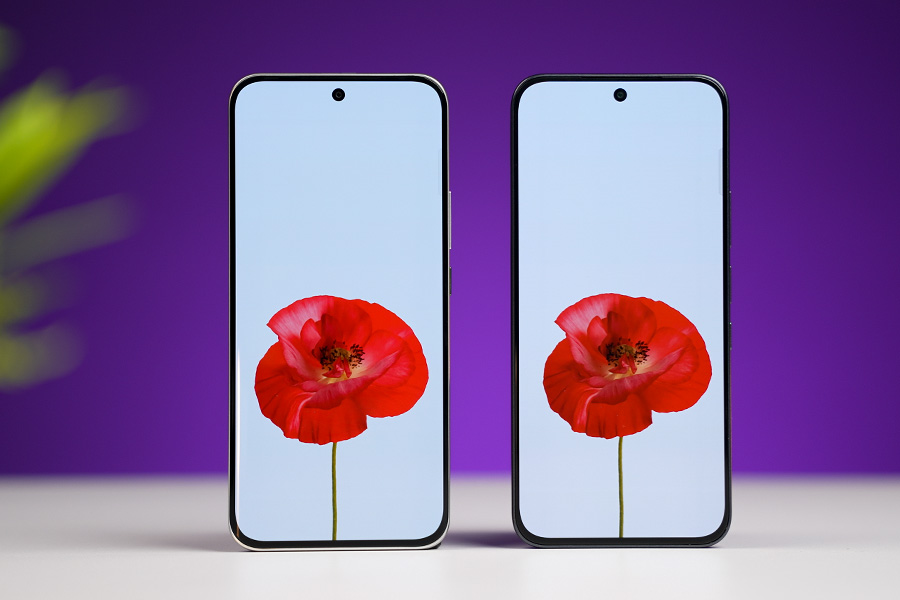
One thing to note, though—the 144Hz refresh rate only works in some selected apps like Settings and Messages. In most other apps, it drops to 120Hz. This isn’t exactly a bad thing since it helps save battery, but if they had enabled 144Hz by default in apps like browsers, the scrolling experience would have been even better.
Performance
Moving to performance, both the Hot 60 Pro and Pro Plus come with the same chipset—the MediaTek Helio G200, the successor to the Helio G100 processor. This is a very good chip for phones in the 25,000 range.
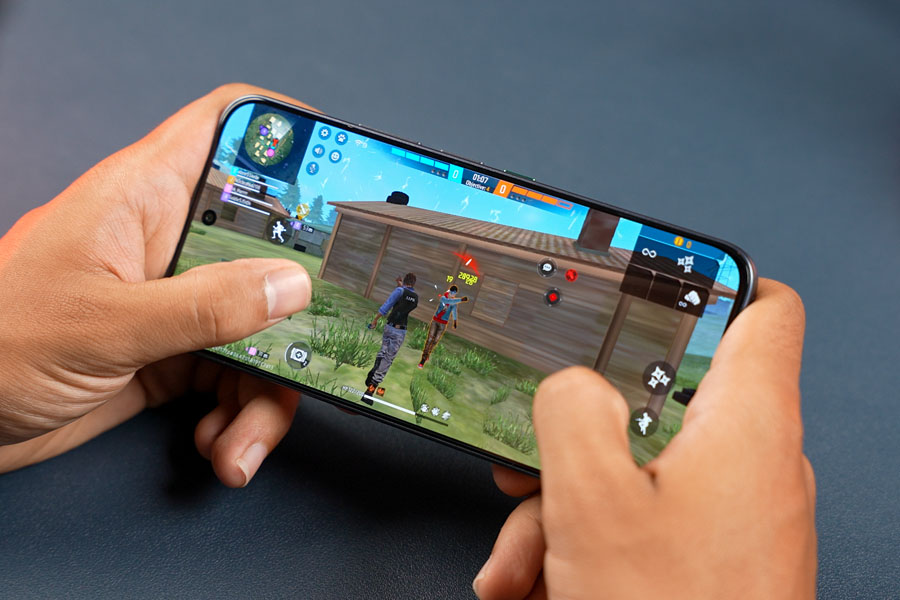
It’s built on the 6nm process. While it doesn’t support 5G, the G200 offers better GPU performance compared to the G100. So when doing normal tasks with 5–7 apps open, the phone doesn’t feel slow, and even for light gaming, the experience is good.
Infinix has also collaborated with Free Fire, and if you play that game, it runs here at 90fps—which no other budget phone can do. PUBG also runs considerably smoothly at 60fps. Of course, there are occasional stutters, but nothing that ruins the experience.
Since the Hot 60 Pro+ is extremely slim, it does heat up a little more than the Hot 60 Pro when gaming for longer sessions. But for short sessions, there isn’t much difference.
Overall, at this price, both phones deliver really good performance.
Software and UI
On the software side, Infinix phones come with their custom XOS skin, which is now much more refined than before. Infinix’s lower mid-range and mid-range phones used to suffer from laggy animations and an unclean experience, but nowadays, you can’t exactly say that. In fact, compared to Redmi and Realme phones, there’s less bloatware here, which is a positive.
Still, you also can’t call the UI excellent like Samsung or OnePlus. It hasn’t reached that level yet. Regarding updates, the Hot 60 Pro+ has a confirmed 3-year update commitment from the company, but for the Hot 60 Pro, the commitment hasn’t been officially confirmed yet.
And of course, a phone without AI features isn’t even a phone these days. So naturally, these phones also have AI features like call summary, call translator, writing assistant that summarizes text from websites, wallpaper generator, circle-to-search, and many more.
Audio and haptics
Moving on to speakers and haptics, even though these are budget phones, Infinix hasn’t compromised here. Both phones come with stereo speakers. The Pro Plus does have slightly better output, tuned by JBL, but the Hot 60 Pro is also good.
The haptics on both aren’t the cheap, rattly kind either. They feel fine, so no complaints there.
Battery and charging
As for battery and charging, both phones come with a 5160mAh battery. Like I mentioned earlier, the Hot 60 Pro+ is impressively slim despite this. In normal usage, both can provide 7–8 hours of backup.
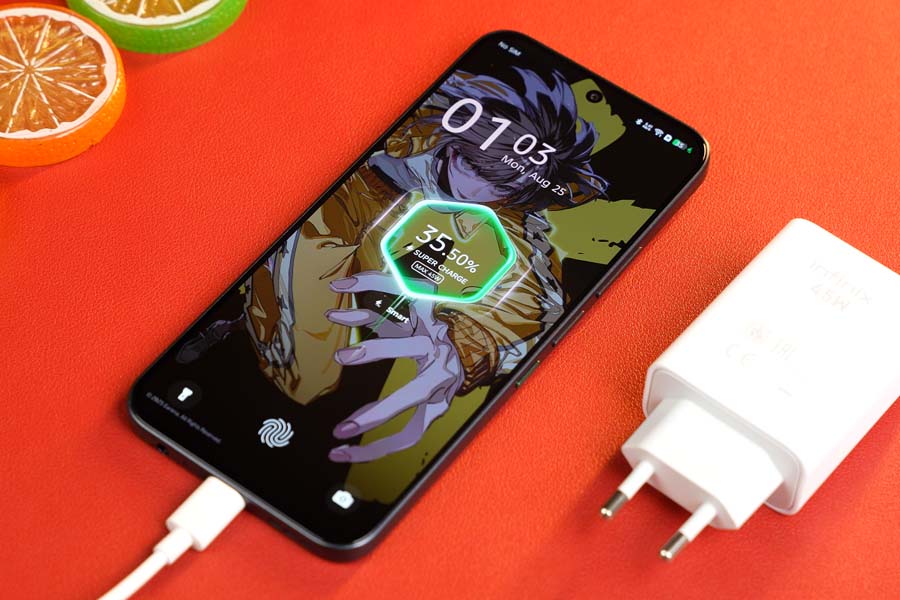
The charger also comes inside the box—a 45W adapter that can fully charge the phones in about an hour to an hour and a half.
Cameras
Finally, let’s talk about the cameras. This is where we see some real differences.
On paper, both phones have the same specs: a 50MP primary camera and a 13MP selfie camera. But the Hot 60 Pro+ uses a Sony IMX 882 sensor, which makes a difference in challenging lighting conditions. The Pro Plus produces better photos in such cases.
That doesn’t mean the Hot 60 Pro takes bad photos. In fact, sometimes it even produces better results than the Pro Plus. But in about 50% of the situations, I personally found the Pro Plus images to be better.
The selfies on the Pro Plus are also better—wider, with improved colors and highlights. The portraits also benefit, with the Pro Plus maintaining better skin tones.
On the video side, both phones can record up to 2K at 30fps. But once again, the Hot 60 Pro+ manages shadows and highlights better compared to the Hot 60 Pro.
Infinix Hot 60 Pro, Hot 60 Pro+ review: Pros and cons
Pros
- Slim design, premium hands-on feel
- A nice 144Hz AMOLED display
- Decent performance with Helio G200
- Great cameras for the price
Cons
- Can heat up slightly during gaming
- No update promise for Hot 60 Pro
Infinix Hot 60 Pro, Hot 60 Pro+ review: Conclusion
So, to conclude this review, the Infinix Hot 60 Pro and Hot 60 Pro+ are surprisingly the best phones under NPR 25,000 right now in Nepal.
If your budget is tight, the Hot 60 Pro offers more value for money. It’s cheaper yet delivers the same performance, speakers, haptics, battery life, and charging, so you’re not missing out on anything major.
But if you want that flashy, premium curved design along with slightly better cameras and a guaranteed 3 years of updates, then the Pro Plus is also a solid choice.
Earlier, when it came to budget phones, Redmi used to be the first recommendation. But now, Infinix is slowly reducing Redmi’s dominance—which is great! Because the more competition there is, the more benefits we as consumers get.
Article Last updated: August 28, 2025



